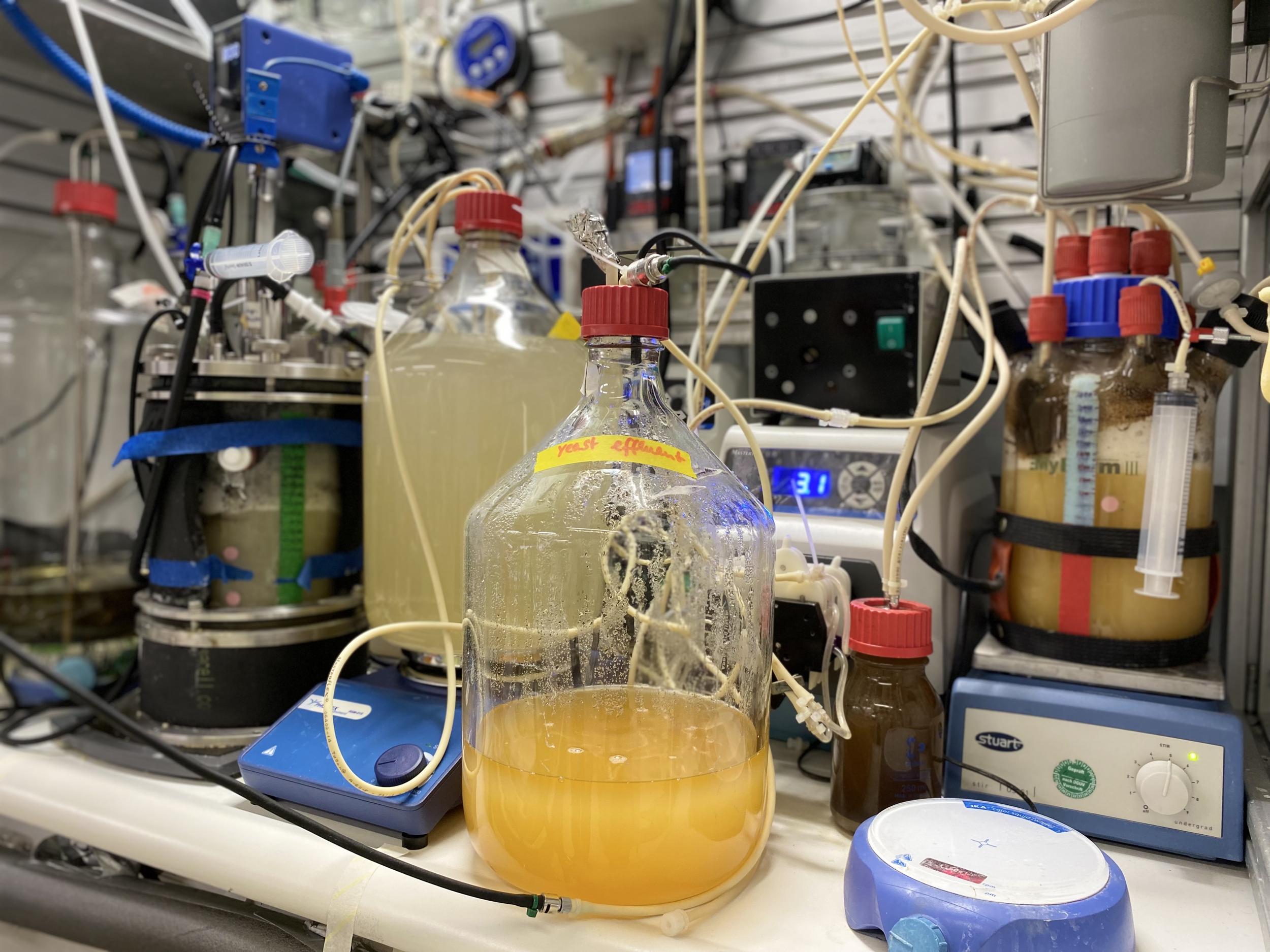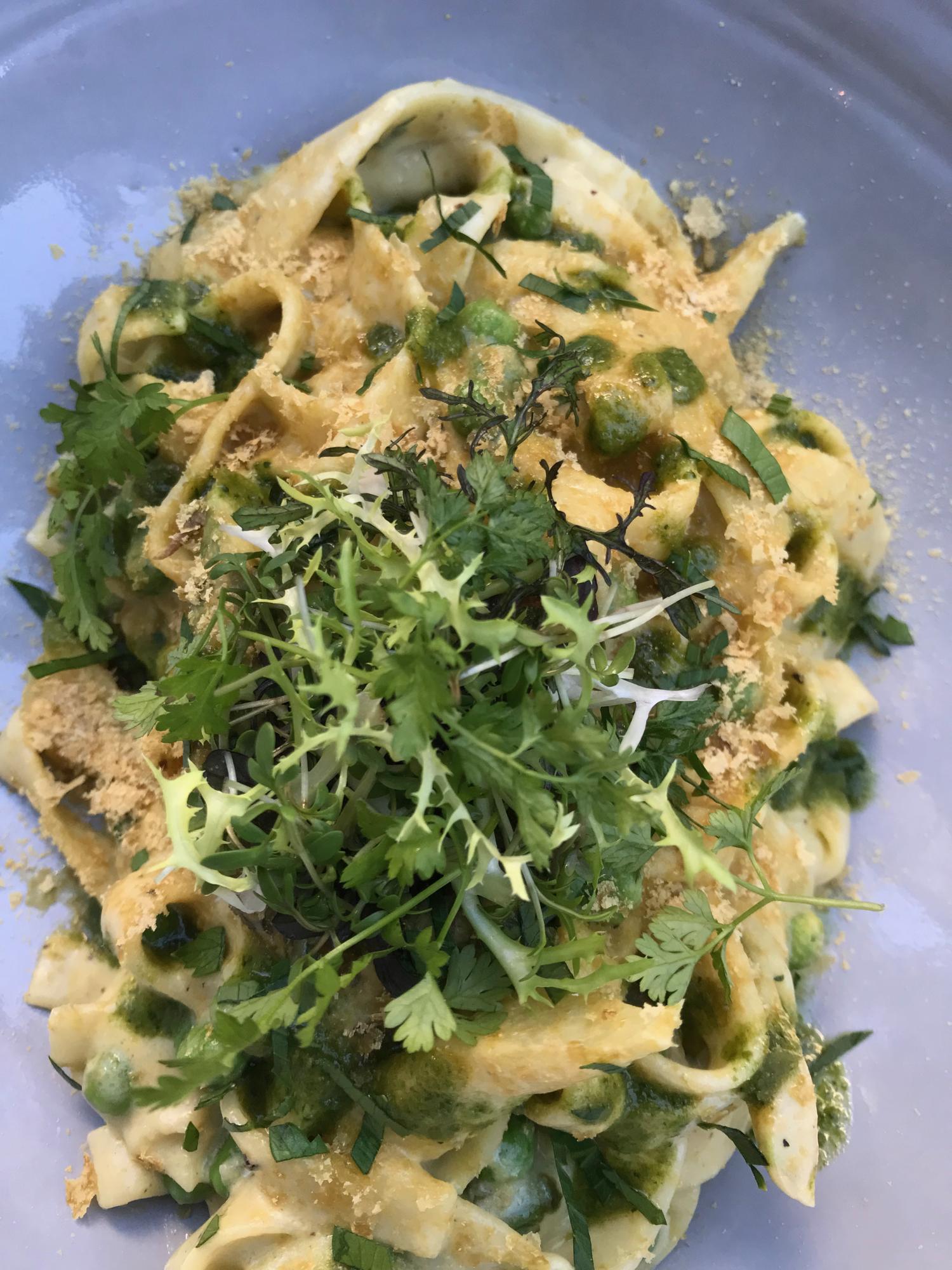Power-to-vitamins: microbes produce folate from simple basic ingredients, say researchers from Tübingen

Although many microbes are visually unspectacular, they have an essential function in the production process of beer, wine, and cheese:
We have already developed a power-to-protein technology. This utilises two different microbes in succession: a Clostridium bacterium reduced carbon dioxide with hydrogen under the exclusion of air to acetate, which the baker’s yeast, a fungus, then transformed under airflow into proteins,” explains professor Angenent.
This first step only functioned, however, if the microbes were supplied with specific vitamins such as B9 (also known as folate), as humans can’t live on proteins alone. The folate, however, had to be added in the power-to-protein system in order for Clostridium to produce acetate. Thus, Prof Angenent tried to find a solution to avoid adding to the process more B9 than it produces.
Frugal bacterium
Together with his team, Lars Angenent substituted the Clostridium bacterium from the first step with the bacterium Thermoanaerobacter kivui, which is more frugal and can itself form the folate necessary in the production of acetate. In the second step, the baker’s yeast produced large quantities of folate. It was already known that baker’s yeast can produce folate from sugar:
“It does that too with roughly the same amount of acetate as basic material, our experiments show. Since we’re no longer adding vitamin B9, we’re certain that it is produced in the process," Angenent ads.
The experiments’ vitamin measurements were handled by a team led by Professor Michael Rychlik from TU Munich, one of the co-authors of the study. About six grams of the yeast, produced and dried, would be sufficient as a daily dose of vitamin B9 for a human.

Copyright: Lars Angenent/University of Tübingen
While promising, the product isn’t ready for your dinner plate just yet. The yeast needs to be processed to remove substances that could cause health issues like gout. Additionally, scaling up from a lab setup to industrial production presents its own set of challenges. Future steps include food safety studies and market analyses to ensure the product is viable and safe for consumption.
But this technology could be a game changer for global food security. With the world’s population growth and climate change threatening traditional agriculture, sustainable solutions like this are crucial. The protein product from this system can serve as a vegan base for meat substitutes, reducing the need for animal farming and its associated environmental impacts.
Thinking in cycles
So where does prof. Angenent sees potential application for his system, already presented in Trends in Biotechnology?
The growing world population is threatened by malnutrition, especially in countries that suffer from drought and whose soils are low in nutrients. In places like this, substitute products, such as ours, could improve the food situation. The fact that we can produce proteins and vitamins at the same time in our bioreactor system at a high rate for sustainable vegetarian and vegan products with no significant use of land is a major step towards this goal.
The professor thinks in cycles and wider connections: the food substitute could drastically reduce the cultivation of animal feed as well as environmentally harmful emissions from livestock farming. Overall, however, even more agriculture will be needed than before, so there is a need to expand the most resource-conserving form of crop cultivation possible. Moreover, farmers will in the future have to be financially rewarded for the added responsibility of protecting the soil and nature.
Latest news:
European Universities alliances advocate to include third-country HEIs in Erasmus Without Papers
CIVIS member universities sign Alliance Agreement in Salzburg
Open access on the rise in life science
"European Researchers’ Night" at the UAM
